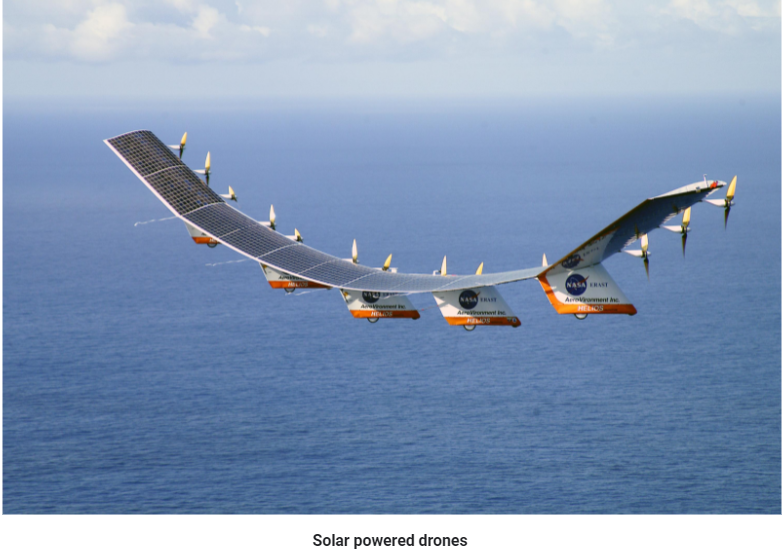
Applications of WPT
Our Team
- Darshan S
- Rishee K
- Ritik Kumar Mehta
- Sakshi Chavan
- Sudhaharan S J
Applications of WPT
Theoretical applications :-
While portable devices and vehicle charging are applications that could be implemented in the near future, some other theoretical applications have been posited for further research and development.
One such application is the Stationary High Altitude Relay Platform (SHARP) . The SHARP system consists of an unmanned airplane that flies at an altitude of approximately 13 miles above the earth, constantly circling the earth in a 2 kilometer diameter. The SHARP airplane would then be used as a communications relay. Here, the SHARP airplane has a large rectenna behind the wings, allowing for power to be transmitted to it from the earth, and thus is able to stay in the air for long periods of time, potentially months . A picture of the aircraft is shown in Figure 5.

Another exciting and future application of MPT is that of the Solar Power Satellites (SPS) system. Carbon dioxide (CO2) emissions from burning fossil fuels have become a point of great concern with respect to global warming. Additionally, fossil fuels are a nonrenewable energy source, and by some estimates fossil fuels could be completely consumed in 100 to 150 years . Thus the need for clean, safe, and abundant renewable energy has been a topic of much debate and recent study. Current renewable energy systems have many drawbacks; solar cells are constrained by the weather, most significantly by cloud cover and lack of sunlight during the night. Wind turbines are contingent upon weather as well, and do not function when no wind is present. Nuclear power plants produce toxic waste and have the potential to cause great disasters in the event of a nuclear meltdown.
The SPS, on the other hand, is a different system entirely, with the collection of solar power unconstrained by environmental factors. In the SPS system, a satellite is fixed in a geostationary orbit above the earth. This satellite collects solar energy and, using the MPT mechanism, beams the energy back down to the earth via microwaves where it is received and converted to power at a rectenna of a size of approximately 2 km2 and then transfers that energy to existing power grids . A satellite above the earth is superior to ground based solar power harvesting because it is unaffected by the weather and is unconstrained by lack of sunlight during night hours, and thus can collect solar energy continuously. Even after accounting for loss during conversion of power to and from microwaves, the SPS system is still able to deliver more power than ground based solar panels. For example, solar radiation has been measured on the ground in Tokyo, Japan as approximately 140 W/m2, whereas a satellite in space can collect solar energy that is measured as 1400 W/m2 ].
The SHARP and SPS systems are both practical implementations of WPT via the MPT mechanism. Indeed, both systems are simply MPT systems, just scaled to a larger size.
They consist of a microwave generator that converts power to microwaves and sends those microwaves to a target rectenna that converts the microwaves back to DC power to be used by the target system.
As exciting and potentially beneficial as MPT can be, there are many potential drawbacks that need to be mentioned and considered.




